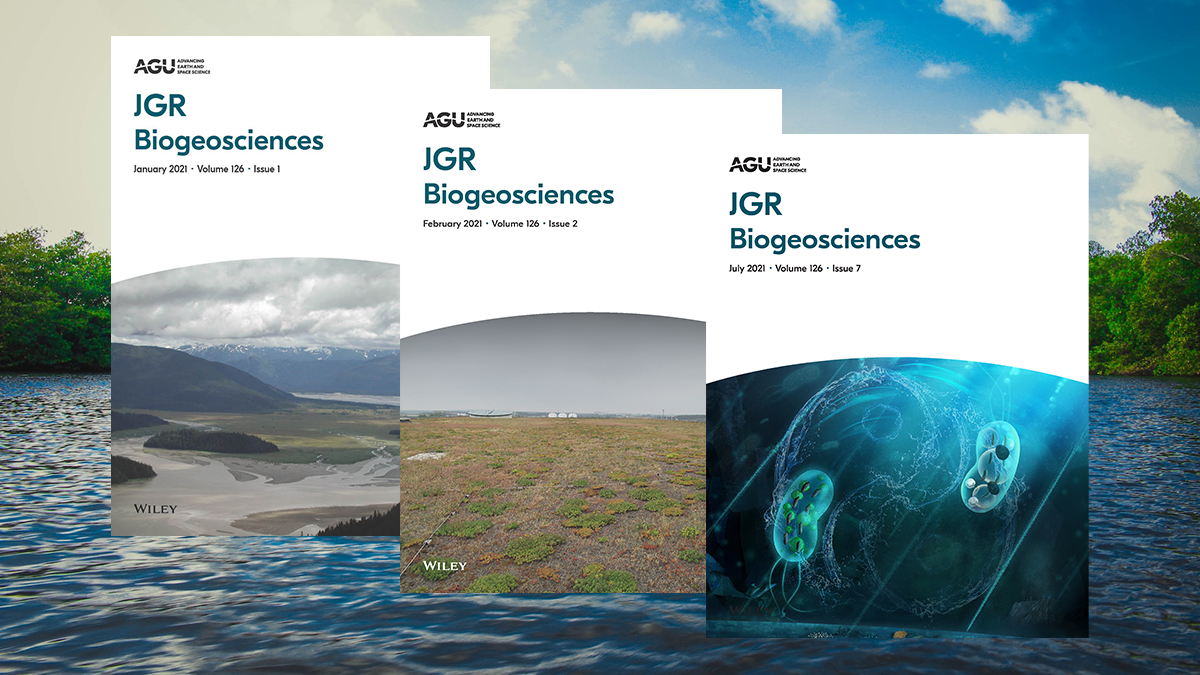Editors’ Vox is a blog from AGU’s Publications Department.
Although 2003 may feel like yesterday to some of us, our lives are quite a bit different now than they were 20 years ago. The internet was still new, cell phones were not all that common, we were listening to music from CDs, and photos were still being developed from film. Some notable events from 2003 include: the space shuttle Columbia disintegrated upon re-entry into our atmosphere, the human genome was sequenced, China’s reservoir behind Three Gorges Dam began to fill, air temperature reached above 100°F for the first time in the UK, and SARS was detected as the first severe and readily transmissible new disease to emerge in the 21st century.
Twenty years ago, JGR: Biogeosciences was approved to become the seventh title of the Journal of Geophysical Research family series, to meet the needs of AGU’s Biogeosciences section (formed in 2000). The acknowledgement that life affects the very geophysical systems that enabled its development and evolution has led to a sea of change in our ability to analyze and interpret a suite of processes that control the Earth system. The journal has since grown, now receiving 500 submissions per year, and has published over 3,000 articles.
We are inviting our community to submit review articles for a special 20th anniversary issue that marks the evolution of a specific field or topic in the biogeosciences in the past 20 years.
While our journal still focuses on the interaction between life and geophysical systems, our recently expanded scope captures new methodologies, new approaches, big datasets, and new ways of thinking that are important for research in the biogeosciences. With that in mind, we are inviting our community to submit review articles for a special 20th anniversary issue that marks the evolution of a specific field or topic in the biogeosciences in the past 20 years. These review articles can span a breadth of topics, methods, approaches, scales, and ecosystems that have been featured in JGR: Biogeosciences over the past 20 years.
Just like the change from landlines to cells phones and CDs to digital media, the field of biogeosciences has advanced. It may not feel like that long ago, but 20 years ago we were simply counting bacteria whereas now we measure microbial function using metagenomes; we were slogging through the mire to collect simple field samples whereas now we use drones and autonomous instruments; we were taking gas samples by syringe into vials for chromatographic analyses, now we have portable gas analyzers to measure soil flux exchange; we were relying solely on field surveys, now we also use remote-sensing products.
JGR: Biogeosciences has provided a platform for the demonstration of the evolution of methodologies, applications, and approaches.
From manually analyzing datasets to machine learning algorithms or from food web models to stable isotope analysis, JGR: Biogeosciences has provided a platform for the demonstration of the evolution of methodologies, applications, and approaches that allowed us to focus on new technologies (sequencing, big data statistics, etc.) to quantitatively test and iteratively develop sophisticated models to ask new and exciting questions about biogeosciences. Given these and many other developments, this is an ideal time to recap what we have learned as we look ahead to future research opportunities to advance our understating of the interaction between living and geophysical systems.
We would be pleased if you considered contributing to this collection. The collection will remain open for new submissions until Tuesday, 31 October 2023. To learn more about how to submit, please visit the Call for Papers.
—Marguerite A. Xenopoulos ([email protected]; ![]() 0000-0003-2307-948X), Editor in Chief, JGR: Biogeosciences and Trent University, Canada; Gil Bohrer (
0000-0003-2307-948X), Editor in Chief, JGR: Biogeosciences and Trent University, Canada; Gil Bohrer (![]() 0000-0002-9209-9540), The Ohio State University, USA; Jing Chen (
0000-0002-9209-9540), The Ohio State University, USA; Jing Chen (![]() 0000-0002-8682-1293), University of Toronto, Canada; Patrick Crill (
0000-0002-8682-1293), University of Toronto, Canada; Patrick Crill (![]() 0000-0003-1110-3059), Stockholm University, Sweden; Shuli Niu (
0000-0003-1110-3059), Stockholm University, Sweden; Shuli Niu (![]() 0000-0002-2394-2864), Chinese Academy of Sciences, China; Dork Sahagian (
0000-0002-2394-2864), Chinese Academy of Sciences, China; Dork Sahagian (![]() 0000-0001-9585-7127), Lehigh University, USA; and Suzanne Tank (
0000-0001-9585-7127), Lehigh University, USA; and Suzanne Tank (![]() 0000-0002-5371-6577), University of Alberta, Canada
0000-0002-5371-6577), University of Alberta, Canada

